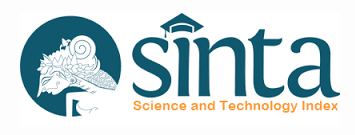PERAN TEKNOLOGI INFORMASI DALAM KOMUNIKASI ANTAR BUDAYA DAN AGAMA
Abstract
Abstract; Perkembangan teknologi informasi telah menunjukkan kemajauan sangat cepat. Kemajuan itu telah menyebabkan manusia lebih mudah untuk berhubungan satu sama lain. Informasi dan peristiwa yang terjadi berbagai belahan dunia dengan cepat dapat diketahui oleh manusia di benua lain. Dalam wacana keagamaan kontemporer menjelaskan bahwa agama mernpunyai banyak dimensi dan tidak lagi seperti dahulu memahami bahwa hanya masalah ketuhanan. kepercayaan, iman, dan sebagainya, tetapi lebih dari itu semua. Dimulai pada isu-isu ekonomi, politik, ilmu pengetahuan dan teknologi, lingkungan hidup, sejarah, perdamaian dan sebagainya. Gejala umum yang dapat dirasakan atau dilihat hari ini, terutama dalam kaitannya dengan kehidupan beragama adalah jumlah ilmuwan yang tinggal di kota-kota besar sangat menyadari bahwa ilmu pengetahuan dan teknologi tidak dapat menyelesaikan semua masalah kehidupan manusia. Karena ilmu pengetahuan dan teknologi tidak dapat memberikan ketenangan pikiran bagi mereka merasa ada sesuatu yang "kurang pas" atau "hilang" dari diri mereka sendiri. Mereka mencoba untuk menemukan "hilang" dalam beberapa cara, antara lain dengan melihat ajaran spiritual agama. Splendor kehidupan beragama di kota-kota besar setelah memudar sebelumnya dihuni oleh lapisan atas dari segi ekonomi dan pengetahuan merupakan salah satu indikator bagaimana besarnya kehilangan kesadaran. Suatu informasi atau pesan yang disampaikan komunikator kepada komunikan akan komunikatif apabila terjadi proses psikologis yang sama antara insan-insan yang terlibat dalam proses tersebut. Dengan perkataan lain, informasi yang disampaikan komunikator kepada komunikan adalah situasi komunikatif seperti itu akan terjadi bila terdapat etos pada diri komunikator. Kata Kunci: Peran, Teknologi Informasi, Budaya The development of information technology has shown very rapid progress. It has led to human progress is easier to relate to one another. Information and events happening around the world quickly it can be seen by humans on other continents. In contemporary religious discourse to explain that religion mernpunyai many dimensions and no longer as it used to understand that the only theological matters. trust, faith, and so on, but most of all. Beginning on economic issues, politics, science and technology, environment, history, peace and so on. Common symptoms that can be felt or seen today, especially in relation to religious life is the number of scientists who live in big cities are well aware that science and technology can not solve all the problems of human life. Because science and technology can not give peace of mind to those felt something was "not fit" or "missing" from themselves. They try to find "lost" in some way, such as by seeing the spiritual teachings of religion. Splendor of religious life in large cities after fading previously inhabited by the upper layers of the economic and knowledge is one indicator of how the magnitude of loss of consciousness. An information or message conveyed communicator to the communicant to be communicative event of the same psychological process between beings who are involved in the process. In other words, the information conveyed communicator to the communicant is a communicative situation like that would happen if there is a communicator yourself ethos. Keywords: Role, Information Technology, Culture
How to Cite
Killian, N. (1). PERAN TEKNOLOGI INFORMASI DALAM KOMUNIKASI ANTAR BUDAYA DAN AGAMA. Jurnal Dakwah Tabligh, 15(2), 159-176. https://doi.org/10.24252/jdt.v15i2.346
Issue
Section
Vol. 18 No.1 Juni 2017
Once an article was published in the journal, the author(s) are:
granted to the journal right licensed under Creative Commons License Attribution that allows others to share the work with an acknowledgment of the work's authorship. permitted to publish their work online in third parties as it can lead to wider dissemination of the work. continue to be the copyright owner and allow the journal to publish the article with the CC BY license receiving a DOI (Digital Object Identifier) of the work.





